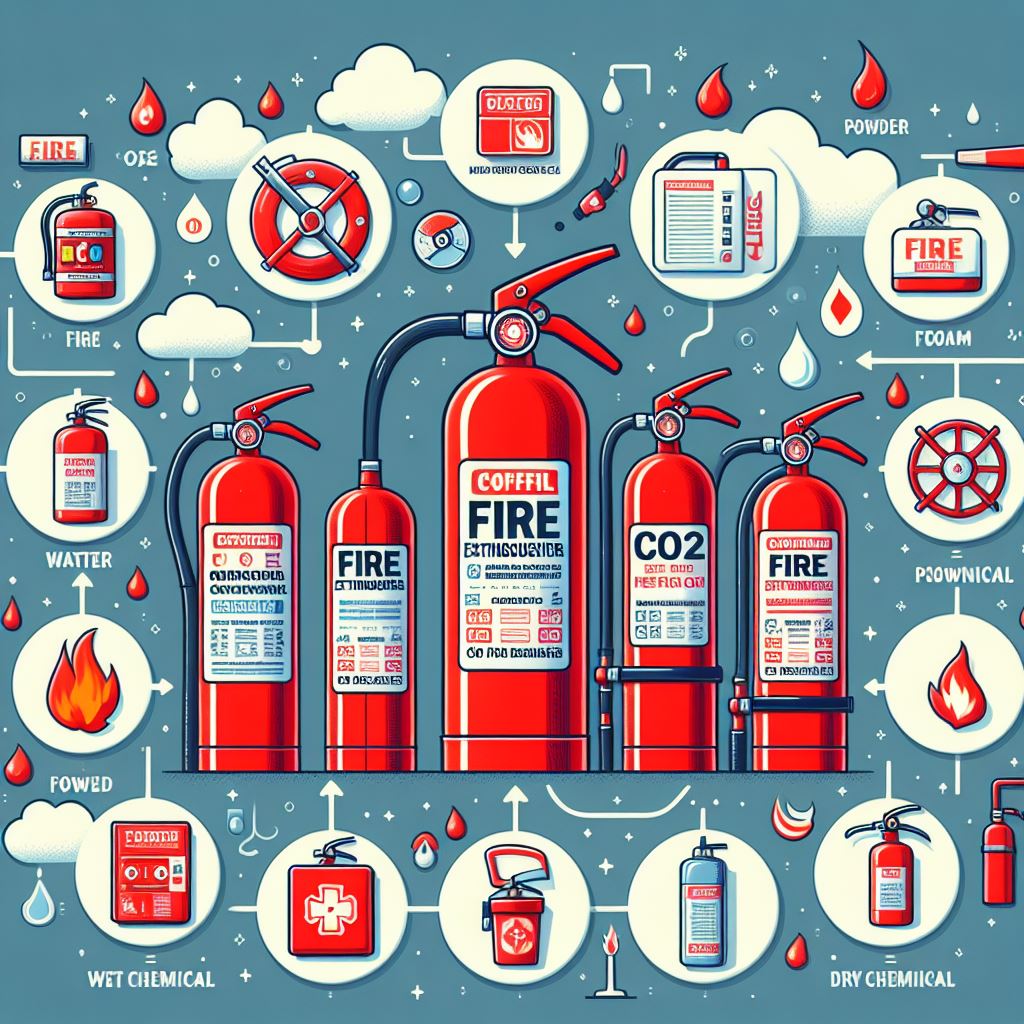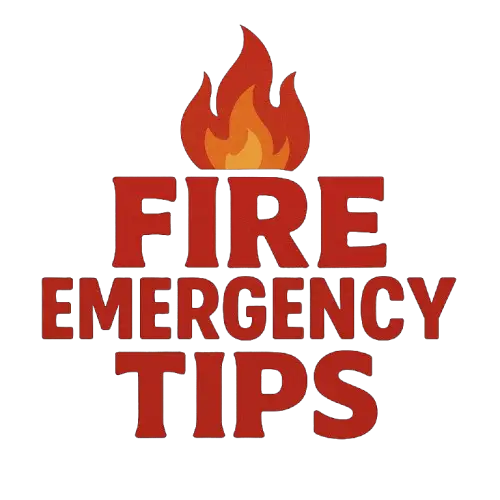
Fire extinguishers are an essential tool for preventing and controlling fires in homes, businesses, and public buildings. They are designed to be easy to use and effective at extinguishing fires before they can cause significant damage or harm. However, fire extinguishers are only effective if they are used correctly, and one of the critical aspects of using them correctly is understanding the numbers and letters on the extinguisher and what they mean.
The numbers on fire extinguishers are a rating system used to indicate the extinguishing power of the extinguisher. The rating system is based on the amount of fire-fighting agent the extinguisher contains and the size of the fire it can extinguish.
Fire extinguishers are labeled with a combination of letters and numbers that indicate the type of fire the extinguisher is suitable for and the size of the fire it can extinguish.
The numbers on fire extinguishers refer to the fire extinguisher’s classification and its effectiveness in putting out different types of fires.

For example; An extinguisher labeled “10A:100B:C” indicates that it can extinguish a Class A fire involving ordinary combustibles up to a size of 10 square feet, a Class B fire involving flammable liquids up to a size of 100 square feet, and a Class C fire involving electrical equipment without causing electrical shock.
The Class A and Class B rating numbers indicate the extinguishing power, while the “C” rating indicates that the extinguisher is safe to use on electrical fires.
The rating system is known as the “class” rating system, and there different classes of fire extinguishers that you need to know in order to understand better what numbers mean on fire extinguishers. This include:
Class A Fire Extinguishers
Class A fire extinguishers are designed to put out fires involving ordinary combustibles, such as wood, paper, cloth, and some plastics. Class A fire extinguishers are labeled with a number that indicates the amount of water the extinguisher holds and the size of the fire it can extinguish.
For example, a Class A fire extinguisher might be labeled 2A, which means it can extinguish a fire that is 2 square feet in size.
Class B Fire Extinguishers
Class B fire extinguishers are designed to put out fires involving flammable liquids, such as gasoline, oil, and grease. Class B fire extinguishers are labeled with a number that indicates the size of the fire it can extinguish.
For example, a Class B fire extinguisher might be labeled 10B, which means it can extinguish a fire that is 10 square feet in size.
Class C Fire Extinguishers
Class C fire extinguishers are designed to put out fires involving electrical equipment, such as computers, motors, and appliances. Class C fire extinguishers are labeled with a letter “C” to indicate that they are suitable for use on electrical fires.
Class C fire extinguishers do not have a number rating because the extinguishing power is not related to the size of the fire but to the type of fire.
Class D Fire Extinguishers
Class D fire extinguishers are designed to put out fires involving flammable metals, such as magnesium, sodium, and potassium. Class D fire extinguishers are labeled with a letter “D” to indicate that they are suitable for use on metal fires.
Class D fire extinguishers do not have a number rating because the extinguishing power is not related to the size of the fire but to the type of fire.
It is important to note that not all fire extinguishers are suitable for all types of fires. Using the wrong type of fire extinguisher on a fire can be dangerous and can make the fire worse.
For example, using a Class A fire extinguisher on a grease fire can cause the fire to spread, while using a Class B fire extinguisher on an electrical fire can cause electrocution.
When selecting a fire extinguisher, it is essential to consider the type of fire that is most likely to occur in your home or business. For example, a kitchen fire is likely to involve grease or oil, so a Class K fire extinguisher would be the most appropriate choice.
In contrast, an office building is more likely to experience an electrical fire, so a Class C fire extinguisher would be a better choice.
In addition to the class rating system, fire extinguishers may also have a numerical rating that indicates the extinguishing power of the extinguisher.
The numerical rating is an indication of the fire extinguisher’s ability to extinguish a fire based on a standardized test. The higher the numerical rating, the more effective the fire extinguisher will be at extinguishing a fire.
For example, a fire extinguisher with a 2A rating can extinguish a fire that is twice the size of a fire that a 1A rated extinguisher can handle. Similarly, a fire extinguisher with a 10B rating can extinguish a fire that is ten times the size of a fire that a 1B rated extinguisher can handle.
It is important to note that the numerical rating system only applies to Class A and Class B fire extinguishers. Class C and Class D fire extinguishers do not have a numerical rating because their effectiveness is not related to the size of the fire.
In addition to the numbers and letters on the fire extinguisher, there may also be other information on the label that is important to know.
For example, the label may indicate the type of extinguishing agent used in the extinguisher, such as water, foam, or dry chemical. It may also provide instructions on how to use the extinguisher, including how to aim and how to activate the extinguisher.
Frequently Asked Questions (FAQs)
What Does A Fire Extinguisher Labeled 5a:25b Mean?
The labeling “5A:25B” on a fire extinguisher indicates the extinguisher’s rating. “5A” means it can extinguish a Class A fire, which involves ordinary combustibles like wood or paper, up to a size of 5 square feet.
“25B” means it can extinguish a Class B fire, which involves flammable liquids like gasoline or oil, up to a size of 25 square feet.
What Does 10A 100b C Mean on Fire Extinguisher?
The labeling “10A 100B C” on a fire extinguisher indicates the extinguisher’s rating. “10A” means it can extinguish a Class A fire, which involves ordinary combustibles like wood or paper, up to a size of 10 square feet.
“100B” means it can extinguish a Class B fire, which involves flammable liquids like gasoline or oil, up to a size of 100 square feet. “C” means it can extinguish a Class C fire, which involves electrical equipment, without causing electrical shock.
What Does 2A 10B C Fire Extinguisher Mean?
The labeling “2A 10B C” on a fire extinguisher indicates the extinguisher’s rating. “2A” means it can extinguish a Class A fire, which involves ordinary combustibles like wood or paper, up to a size of 2 square feet.
“10B” means it can extinguish a Class B fire, which involves flammable liquids like gasoline or oil, up to a size of 10 square feet. “C” means it can extinguish a Class C fire, which involves electrical equipment, without causing electrical shock.
What Does 4A 40b C Mean?
The labeling “4A 40B C” on a fire extinguisher indicates the extinguisher’s rating. “4A” means it can extinguish a Class A fire, which involves ordinary combustibles like wood or paper, up to a size of 4 square feet.
“40B” means it can extinguish a Class B fire, which involves flammable liquids like gasoline or oil, up to a size of 40 square feet. “C” means it can extinguish a Class C fire, which involves electrical equipment, without causing electrical shock.
All Fire Extinguishers Are Labelled with A Letter and A Number. What Does the Number Indicate?
The number on a fire extinguisher indicates the capacity of the extinguisher to put out a fire, specifically the amount of extinguishing agent the canister contains. This number is typically preceded by the letter rating of the fire extinguisher, which indicates the class of fires for which it is effective.
For example, a fire extinguisher with the rating of “2A” would be effective on Class A fires involving ordinary combustibles like wood or paper, and it would have the capacity to put out twice as much fire as an extinguisher with a rating of “1A”. Similarly, a fire extinguisher with a rating of “10B” would be effective on Class B fires involving flammable liquids and have the capacity to put out ten times as much fire as an extinguisher with a rating of “1B”.
A Fire Extinguisher Is Labeled B-I. What Type of Fire Will Be Put Out by This Extinguisher?
The label “B-I” on a fire extinguisher indicates that it is designed to extinguish fires involving flammable liquids and gases (Class B fires) and is effective for use on fires that involve flammable liquids such as gasoline, oil, and grease. It is not designed for use on Class A fires (involving ordinary combustibles such as wood, paper, or cloth) or Class C fires (involving electrical equipment).
Final Thoughts
Understanding the numbers and letters on fire extinguishers is critical to ensuring that they are used correctly in the event of a fire. Using the wrong type of fire extinguisher or failing to use the extinguisher correctly can be dangerous and can result in injury or property damage.
It is essential to know which type of fire extinguisher to use for different types of fires and to understand how to use the extinguisher properly.
The numbers on fire extinguishers refer to the extinguisher’s classification and its effectiveness in putting out different types of fires. It is important to select the appropriate fire extinguisher for the type of fire that is most likely to occur in your home or business and to know how to use the extinguisher properly.
Citations:
- National Fire Protection Association. (2018). Portable fire extinguishers. NFPA 10.
- Occupational Safety and Health Administration. (n.d.). Fire extinguishers. Retrieved from https://www.osha.gov/laws-regs/regulations/standardnumber/1910/1910.157
- U.S. Fire Administration. (2017). Fire extinguishers. Retrieved from https://www.usfa.fema.gov/prevention/outreach/extinguishers.html
